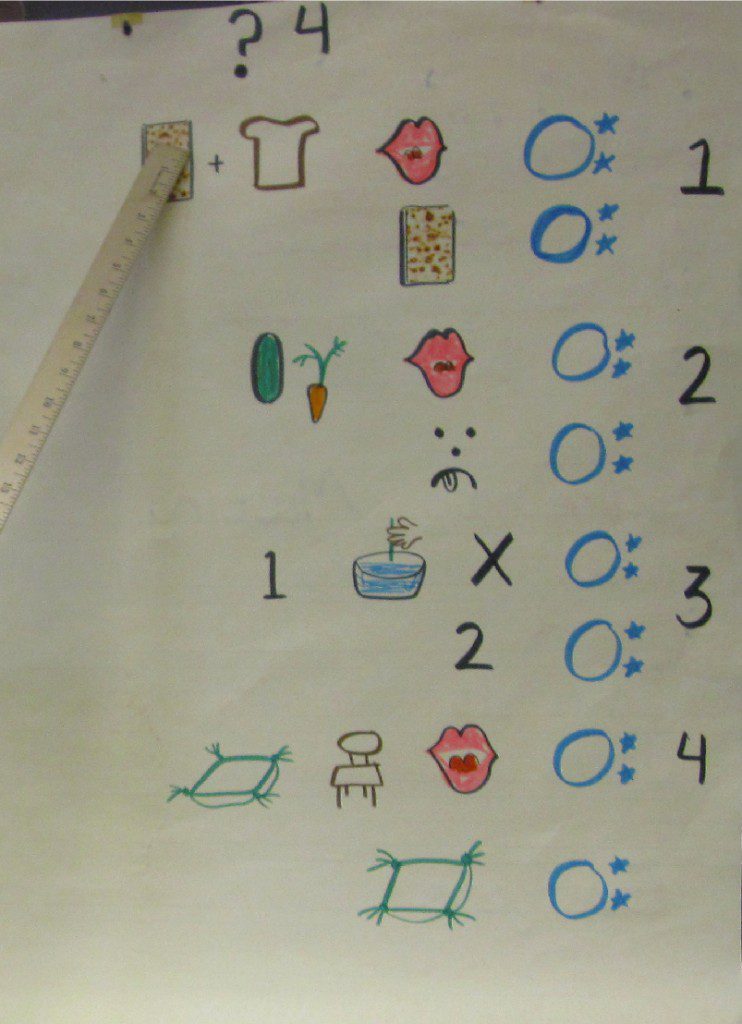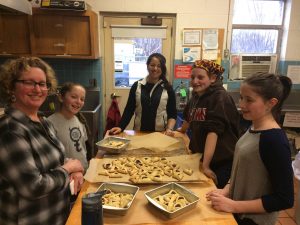One of the greatest privileges of being a kindergarten teacher in a Jewish day school is having the opportunity to teach children to recite the four questions. Unlike almost anything else I teach them about Jewish ritual, this is “real work.” The candles will get blessed, kiddush will be recited, and birkat hamazon chanted with our without them. But children are needed for the Mah Nisthana. It’s their gig, and they know it.
In our school, children have only a modest introduction to spoken Hebrew in the Gan, and do not learn to read and write the alef-bet until first grade. So, figuring out ways to make the Miah Nisthana meaningful to them in Hebrew has presented me with some interesting challenges.
My goals for the Gan are that they feel confident in their recitation; that they have a general sense of what the individual words mean; that they have some kind of written text to help them remember all four questions.
The first goal is accomplished by practice, practice, practice. We practice several times a day starting shortly after Purim. The second goal is accomplished by explaining the questions in English, and then working with the children to come up with hand motions that correspond to the “big ideas.” The last goal is the trickiest – the children don’t read Hebrew, and I wouldn’t give them transliteration even if I thought it would be useful. So, last year a created a picture chart, with symbols for the same big ideas. I wrote the symbols in the Hebrew direction to get them prepared for reading from a real haggadah next year. The week before seder, the children take turns leading and pointing, and a small copy of the chart is included in their Gan haggadah.
An additional goal is for the work of learning the Four questions to be fun. Take a look at a video of my class practicing last week, and let me know how you think I did!
Chag Sameyach v’chasher. We’ll be welcoming a new dog into our home this Passover – check out the Homeshuling facebook page if you’d like to see him.


